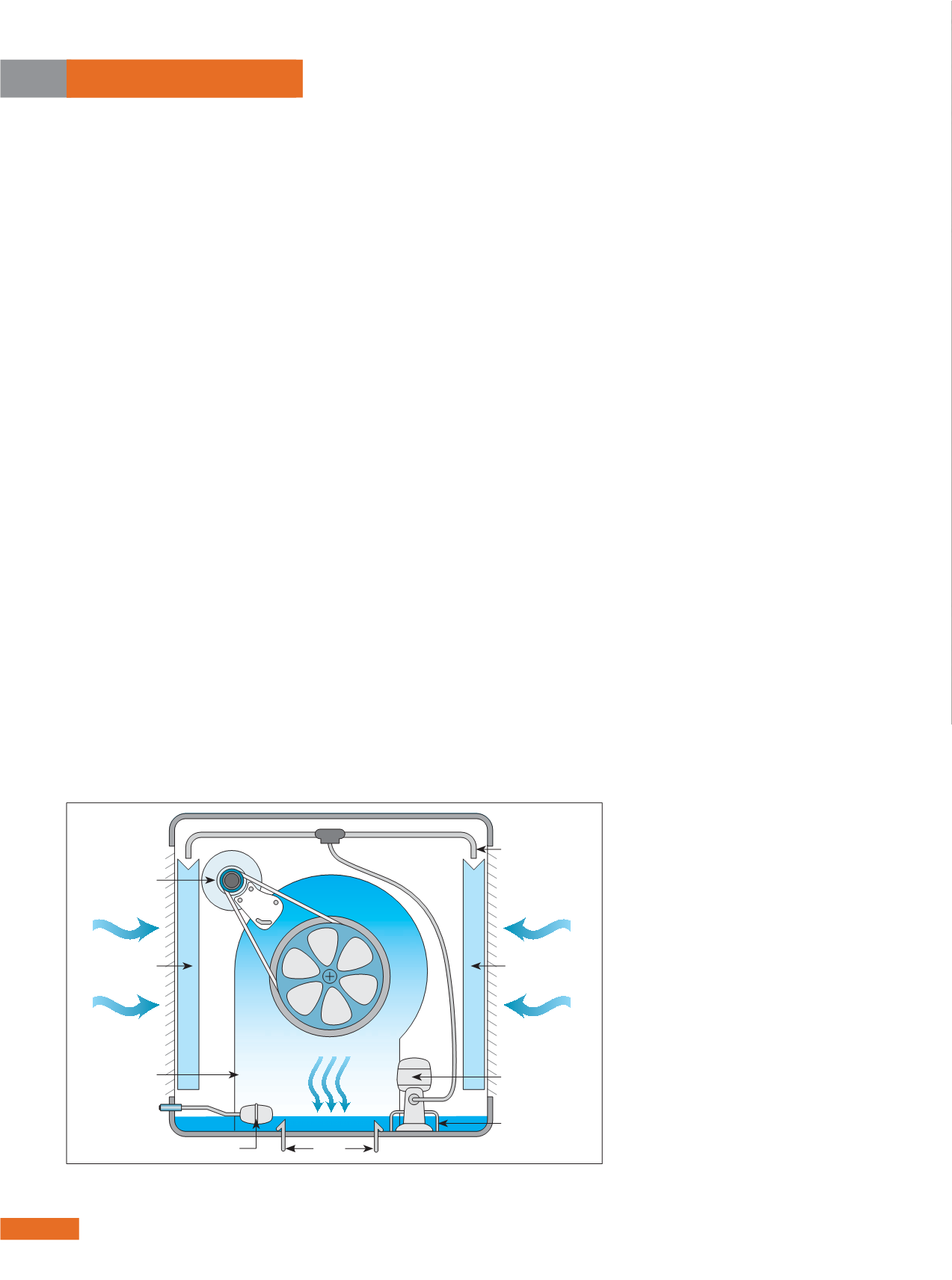

4 8
E L E CT R I C AL CONNE CT I ON
AUTUMN 2 01 5
COOLING SYSTEMS
The rationale evaporates
T
o anyone thinking about buying an
evaporative cooler, the advice is …
don’t.
These units offer poor performance and
inefficient cooling, and they are expensive
to uninstall.
Evaporative cooling is primitive and
outdated. It has been superseded by fast,
efficient reverse cycle air conditioning
based on the technology that runs the
kitchen fridge, which reliably keeps our
food from spoiling.
Evaporative cooling is common due
to heavy marketing by the two or three
companies that are heavily vested in it.
About 20% of households in Victoria
have a unit and about 60,000 units are sold
each year.
Evaporative systems are included in
off-the-plan large-volume standardised
dwellings built on Melbourne’s fringe.
These systems are less common in Sydney,
where it is generally accepted that they don’t
provide the level of cooling required for
coastal suburbs.
Some units are still being installed in the
marginally drier western suburbs.
The performance of evaporative coolers
varies depending on daily fluctuations in
temperature and humidity, and the level
of maintenance.
They can sometimes make occupants
feel a bit cooler, but most of the time the
atmosphere is muggy, with high humidity
beyond the accepted comfort zone.
HOW IT WORKS; WHY IT DOESN’T
Evaporative cooling adds lots of moisture
to the outside air, then pumps that air at high
volume through the dwelling.
Generally, for the effect to be perceivable,
the outdoor air needs to be below 30%
relative humidity (RH).
RH indicates the amount of moisture in the
air at a given temperature. As air gets warmer
it can hold more moisture; as it gets cooler it
can’t hold nearly as much.
RH is the difference in readings between
two mercury-filled glass thermometers: one
exposed to the open air (dry bulb), the other
wrapped in a wet wick (wet bulb).
An evaporative cooler can effectively
operate only when windows and doors are
open, thereby introducing a security risk.
Any work that has been done to upgrade
the building envelope is compromised in an
extreme way.
Insulation and weather sealing is wasted.
Instead of having consistent insulation over
ceiling areas where the evaporative registers
are located, there is a big ‘thermal chimney’ in
each room.
Occupants are directly exposed to the
varying temperature and humidity outside.
This is a particularly important matter in
southern states where winter heating
requirements are great, and much heat
is lost through this ducting-induced
thermal chimney.
In Melbourne, where evaporative coolers
are common, Sustainability Victoria states that
humidity is usually in the range of 40-50% on
hot afternoons. This is outside the effective
range for using evaporative coolers.
In places such as Mildura, which has
a humidity range of 20-30% on a hot
afternoon, it is still hit and miss. Often
the outside humidity, coupled with high
temperatures, is well above 50% and the
evaporative cooling fails to do anything
appreciable for the occupants.
The use of evaporative coolers has other
downsides, as outlined below.
Those roof-top systems that
rely on water evaporating just
don’t measure up compared
with modern air conditioning.
John Konstantakopolous
and
Matthew Wright
present the
argument.
Typical direct evaporative air cooler components.
Evaporative
pads
Evaporative
pads
Fan motor
Recirculating
Pump
Fan
Pump
Screen
Air
Air
Cool air
Float
Air
Air
Water
distribution
lines
Duct
















